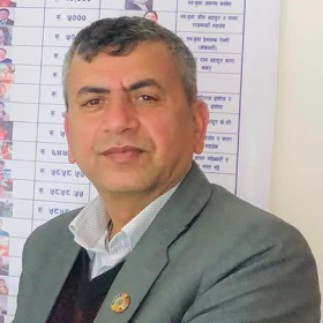Opinion
Local concerns
Strengthening local institutions can help Nepal attain and expand on its development goals
Jhabindra Bhandari
The Local Self-governance Act (1999) was a landmark in empowering local bodies for integrated planning, budgeting, monitoring and multi-sector coordination across a range of stakeholders. Still, transparency and accountability remain major concerns for policymakers, planners and civil society organisations as a lot needs to be done on this regard. In most circumstances, our planning system is still centralised and there is a long way to go before we have decentralised local governance at the district and village levels.
Government absence
The most common problem faced by the current practice of local governance is the inadequate allocation of resources for implementing development plans. Thus, many local needs and priorities remain unmet. In order to address this problem, results-based development planning has recently been introduced in the districts, which aims to develop the capacity of district-level stakeholders in prioritising resources as well as monitoring the implementation process through a more participatory and holistic approach.
Unfortunately, the absence of elected bodies and political leadership in the districts for over 15 years has had adverse impacts on local governance. Without a local government in place, it is very difficult to meet the development aspirations of the people. As the country has been in a state of prolonged political instability and transition for years, local elections are now the top priority for both the new government and the political parties to ensure local leadership and facilitate development.
Coordination and inclusion
Only when local elections are held can participatory local governance be implemented in its true sense. Over the years, a participatory and gender-sensitive approach to development planning has been emphasised at all levels to effectively address the needs and priorities of rural people. In most districts, however, existing information systems have not been sufficiently utilised in the planning process. Additionally, there is a lack of multi-sector coordination among a range of partners to review existing data and evidence in order to ensure that targets and indicators are realistically set in terms of local needs and priorities. Nevertheless, the preparation of periodic plans in all districts provides a very practical basis and direction for prioritising resources at the local level. Still, the issues of social inclusion and equity have yet to be fully addressed while implementing local development plans.
The participation of the poor, socially excluded and marginalised communities is still minimal in the planning and decision-making process. Hence, they are still some ways from the politics of development. There is also a huge gap between the rich and the poor in terms of their access to resources. Though the strategy of reaching the unreached has become a political agenda, it has yet to be translated into tangible action. In reality, all of this is easier said than done.
Multiple focuses
There are also a range of other priorities to consider in local planning and resource mobilisation. For instance, investments in infrastructure development, education, safe motherhood, nutrition, child protection and HIV/AIDS are essential. There is also an increasing need to effectively implement existing social policies at the district and village levels. Challenges still exist in ensuring effective distribution of old-age allowance, child grants and other social incentives, which aim to improve the livelihood of the poor, socially marginalised and vulnerable communities.
There is also an increasing realisation that people’s right to health and education should be the prime focus. To ensure that social services are effectively and efficiently delivered to meet people’s needs and priorities, the institutional capacity of local bodies, civil society organisations and private sectors has to be further improved. More importantly, coordination among a wide range of stakeholders is of vital importance to minimise duplication of resources at all levels.
In the recent years, the Local Governance and Community Development Programme (LGCDP) has been recognised as a landmark move in improving local governance for community empowerment and effective service delivery. The LGCDP envisions that local bodies become more responsive to people’s needs and priorities. Thus, the local governance system in Nepal seeks to be guided by the principle of decentralisation where local bodies are the primary agents of change, providing effective and efficient services at the grassroots.
Local governance and MDGs
This has, to a certain extent, manifested in the significant progress Nepal has made towards achieving Millennium Development Goals (MDGs). Still, though the majority of health-related MDGs have already been achieved, much more needs to be done in the area of reducing poverty and hunger and achieving gender equality, universal primary education, maternal health and combating HIV/AIDS. All of this requires that local development plans be further aligned with MDGs. If local governance is to be further strengthened and made more responsive, the current level of achievements in health, education, agriculture and sanitation can be drastically improved in the years to come.
Bhandari is with Nutrition and Food Security Secretariat at the National Planning Commission. Views expressed are personal




 16.12°C Kathmandu
16.12°C Kathmandu










